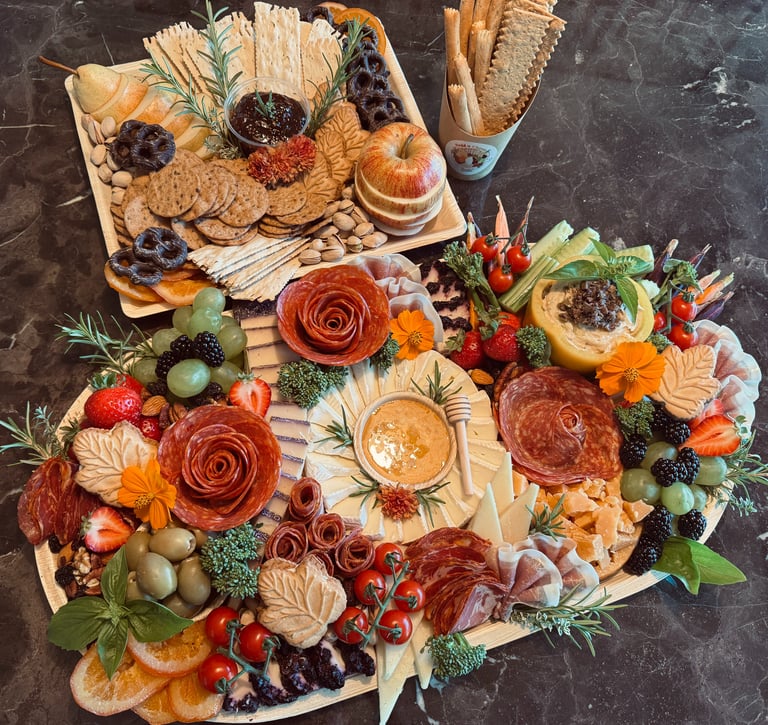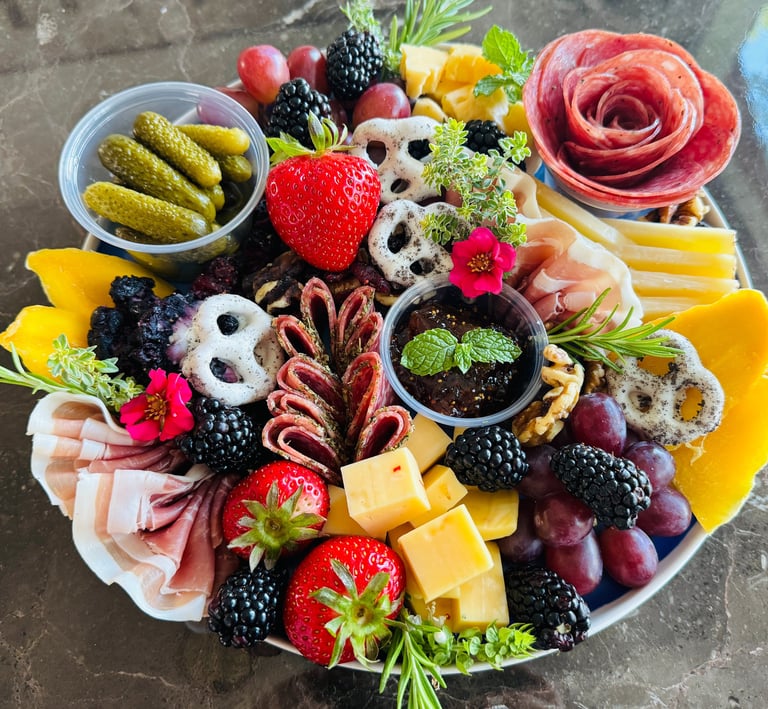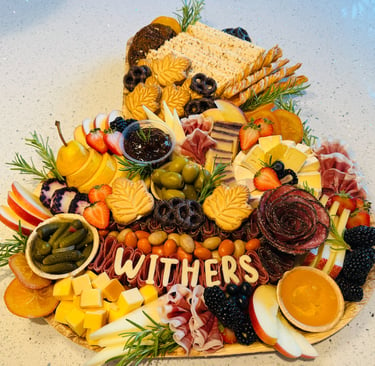Three by Three: Guest Artists in Focus
QUESTION 2. How do you use color, height, and negative space to turn edible ingredients into an intentional composition rather than a simple arrangement?
ANSWER 2. When I design a board, I create a centerpiece or an eye catching spot then spread different colors around so your eyes move across the board, not stuck in one spot. I add height by folding meats, stacking cheeses, stacking fruits or using small bowls so the board has dimension instead of looking flat. And I use small elements like nuts or dried fruit to gently fill negative space and create a natural, seamless flow across the board.


Marasri "Maggie" Selkirk
Culinary Artist / Charcuterie Stylist
BIO: Hi! My name is Marasri Selkirk (Maggie), and I live in Dallas, TX. I grew up in Thailand, where cheese isn’t a common part of our food culture, so I was never a big fan of it. Funny enough, I fell in love with creating beautiful charcuterie boards and now I’m completely obsessed with the art of it.
It all started because my husband loves snacking on cheese and meats and I wanted to make it look special for him. From there, I began watching videos, teaching myself, and experimenting. And now I have a small business called Magg n Cheese. Every board I make is unique and truly a little masterpiece from the heart, guided by instinct, emotion, and a desire to create an experience.
This work has taught me that art doesn’t always need a brush or a stage. It can live on a wooden board, shared and enjoyed bite by bite. And I’m honored every time someone invites my art into their celebration.
LINK: @magg.n.cheese2024
QUESTION 3. How do you balance artistic freedom with practical considerations like temperature, freshness, and timing when composing a board?
ANSWER 3. For me, creativity always comes first but it has to work in real life. So I plan my boards in a way that keeps everything fresh, safe, and enjoyable to eat. I usually prep ingredients in stages and keep anything perishable chilled until the last possible moment. Sometimes I prep certain elements the night before so that on the day I assemble the board, I can work faster and keep everything as fresh as possible. I also think about how long the board will be sitting out so I make sure the board is assembled within two hours and I deliver it with ice packs to maintain the temperature.
If I’m working with soft cheeses or fresh fruit, I place them last. I’ll even place soft cheeses in the freezer for a few minutes so they firm up just enough to hold their shape and cut cleanly. Meats and harder cheeses go down first because they hold up better. I also design with practical flow in mind, people should be able to serve themselves easily without the board losing its shape.
So it’s always a mix of art and logistics: I want the board to look beautiful, but it also needs to taste fresh and last through the event. That balance is part of the fun.
QUESTION 1. When building a charcuterie board, what’s the first element you think about—flavor progression, texture contrast, visual balance, or mood?
ANSWER 1. I like to begin with balance both in flavor and in the overall visual composition. One method I often use is the 3-3-3-3 rule, which is a helpful guideline for building a well-rounded charcuterie board. It includes
3 types of meats
3 types of cheeses (soft, semi-soft/semi-hard, and hard)
3 types of starches (crackers and breads)
3 types of accompaniments (fruits, nuts and spreads)
This structure ensures variety in flavor, texture, and visual appeal without overwhelming the board with too many elements. It creates harmony and keeps everything intentional, while still leaving room for creativity and artistic expression.






All copyright and reproduction rights are reserved by Marasrii "Maggie" Selkirk.
Artwork may not be reproduced in any form without the artist's express written permission.
VIEWING ON MOBILE DEVICE?
CLICK IMAGE FOR FULL VIEW..
VIEWING ON MOBILE DEVICE?
CLICK IMAGE FOR FULL VIEW..
VIEWING ON MOBILE DEVICE?
CLICK IMAGE FOR FULL VIEW..